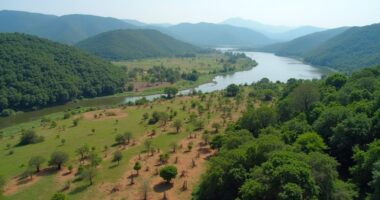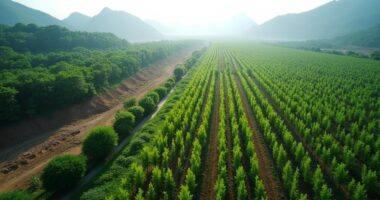A recent scorecard from forest scientists and the Clean Air Task Force has shed light on the gaping flaws in forestry carbon credits and improved forest management (IFM) projects across North America. Most protocols failed to deliver quality, with issues like unverifiable claims and risks from wildfires. Think of it as a leaky bucket—holding water but not doing a great job at it. For those interested to explore the implications and potential solutions, there’s plenty more to uncover.
New Scores Expose Flaws in Forestry Carbon Credits
In the domain of environmentalism, where every tree counts and carbon credits dance like confetti at a party, a new initiative has emerged that promises to shake things up. This initiative, driven by leading forest scientists and organizations like the Clean Air Task Force, has released a scorecard evaluating 20 forest carbon credit protocols used in both voluntary and compliance markets across North America. The results? Let’s just say they weren’t exactly a glowing endorsement. Most protocols received low marks for ensuring credit quality, raising eyebrows among environmental advocates and market players alike.
Forest carbon credits are no small potatoes; they represent nearly 40% of the global voluntary carbon market, which peaked at a staggering $2 billion in 2022. However, with great potential comes great scrutiny, especially when the integrity of these credits is questioned. If protocols improve, projections suggest the market could reach a jaw-dropping $1 trillion by 2050. But the current state of these protocols is like a leaky bucket – full of holes that could sink the ship of market confidence. The study highlights the need for protocol overhaul due to identified flaws that threaten the effectiveness of carbon credit systems. Forests as carbon sinks absorb over 15 billion metric tonnes of CO2 annually, emphasizing the importance of maintaining high-quality protocols.
The scorecard highlighted major quality challenges, such as weak claims about additionality—basically, assumptions about what would happen without the project. It’s like trying to guess how many cookies are in a jar without actually looking inside. Plus, protocols often overlook permanence risks from wildfires or pests, using a one-size-fits-all approach rather than tailoring solutions to specific forest contexts. These challenges undermine the carbon offset projects that are designed to balance emissions by funding environmental initiatives.
The scorecard reveals troubling gaps in carbon credit protocols, undermining confidence with vague claims and a one-size-fits-all approach.
To remedy these issues, experts recommend stronger rules, enhanced scrutiny, and greater transparency in monitoring systems. Think of it as upgrading from a flip phone to the latest smartphone; the benefits of better technology and oversight are clear. Buyers are urged to evaluate credits on a project-by-project basis, holding both registries and themselves accountable. If they do, they might just help turn the carbon credit market from a gamble into a reliable tool for climate action.









